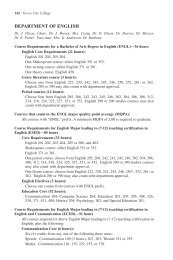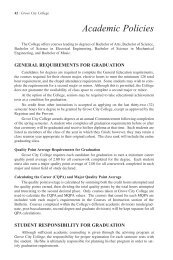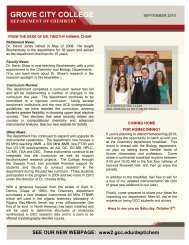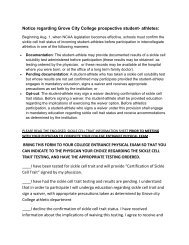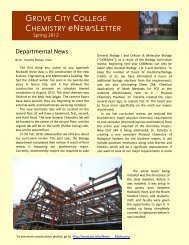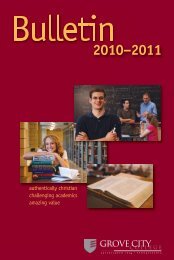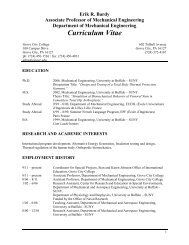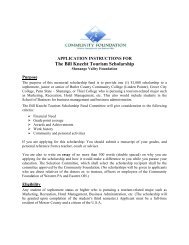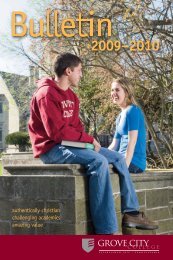A Review of Power-Generating Turbomachines - Grove City College
A Review of Power-Generating Turbomachines - Grove City College
A Review of Power-Generating Turbomachines - Grove City College
Create successful ePaper yourself
Turn your PDF publications into a flip-book with our unique Google optimized e-Paper software.
technologies. Researchers in the UK have carried out cradle-to-grave assessments (including<br />
emissions from starting materials all the way through the decommissioning and recycling <strong>of</strong> the<br />
devices) <strong>of</strong> tidal and wave turbine systems and shown them to have comparable energy payback<br />
periods, CO2 payback periods, and energy and carbon intensities when compared to each other.<br />
They are also comparable to established technologies, such as wind turbines, and quite low when<br />
compared to typical fossil fuel technologies. All ready at acceptable levels, life cycle properties<br />
<strong>of</strong> tidal and wave systems only stand to get better as their construction methods and deployment<br />
efficiencies improve. 34<br />
5.0 Wind Turbines<br />
5.1 Past<br />
Wind turbines are unique because, unlike the previously discussed turbomachines, they are not<br />
enclosed and the rotor blades almost always lacks a stator, as well as other common components<br />
like multiple stages, nozzles, inter-stage guide vanes, and compressors. These differences cause<br />
some to not regard them as true turbines; however, they are operating under the same principles<br />
and for the same end-purpose <strong>of</strong> electrical power generation. The modern wind turbine evolved<br />
from the windmill (a purely mechanical device), which has been in use for centuries, most<br />
notably in Europe. In the very late 1800s to early 1900s, the windmills were first adapted to<br />
convert wind energy into electricity, creating the first true wind turbines. 35 Electrical generators,<br />
however, will not be addressed here. Wind turbine technology remained relatively dormant for<br />
many years until the 1970s when research and development accelerated rapidly. Today, wind<br />
turbines are viewed as a maturing technology with over 200 GW <strong>of</strong> installed electrical capacity<br />
in over 80 countries. 36<br />
While onshore installations are now well-developed, many countries are now directing their<br />
attention to <strong>of</strong>fshore installations. The <strong>of</strong>fshore wind resource is relatively untapped worldwide<br />
and holds enormous potential for electricity-generating capacity. 37 While <strong>of</strong>fshore wind turbines<br />
have been conceptualized for many years, the first realized <strong>of</strong>fshore wind farm was not built until<br />
1992 <strong>of</strong>f the coast <strong>of</strong> Denmark. The first large, utility-scale <strong>of</strong>fshore wind farm was not<br />
commissioned until 2002. Today there is over 1000 MW <strong>of</strong> installed <strong>of</strong>fshore wind capacity 35 ,<br />
but <strong>of</strong>fshore wind remains a largely untapped source <strong>of</strong> renewable energy and <strong>of</strong>fers many<br />
opportunities for research and development.<br />
5.2 Current Design<br />
The geometry <strong>of</strong> the rotor, which consists <strong>of</strong> a hub and blades, determines the basic classification<br />
<strong>of</strong> a wind turbine. There are two basic classifications <strong>of</strong> a wind turbine: the horizontal-axis wind<br />
turbine (HAWT) and the vertical-axis wind turbine (VAWT), distinguished by the orientation <strong>of</strong><br />
the rotor axis with respect to the oncoming flow <strong>of</strong> air. The rotors in HAWT devices, which are<br />
more common than VAWT devices, are classified according to several factors including rotor<br />
orientation, hub design, rotor control (pitch or stall), blade number (2 or 3), and yaw system.<br />
Proceedings <strong>of</strong> the 2012 ASEE North Central Section Conference<br />
Copyright © 2012, American Society for Engineering Education<br />
10



